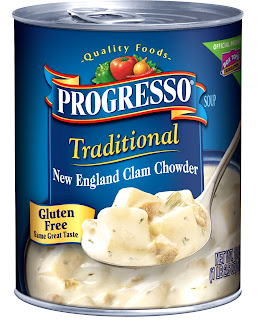We can all name several National Parks, and many
other designated conservation areas, in our various countries. It's a fair bet
that all of those named will be terrestrial, as marine conservation areas are
much less familiar to us – not surprising as many are rather difficult to
visit.
The Faroe-Shetland Sponge Belt MPA (Marine Protected Area)
[1] is, as its name suggests, a region of ocean bed rich in sponges and it also
has good populations of ocean quahogs (Arctica
islandica), a type of clam (see above) that is collected by dredging in
some areas. They are not overfished and may be sold as mahogany clams for
steaming, or used in the preparation of canned chowders and other products [2].
Like all clams, they have two shell valves that are held closed by the
contraction of adductor muscles and gape when the muscles are relaxed,
the valves being forced apart by the elastic hinge. When open, the animal feeds
by drawing in a current of water through an inhalant siphon and this passes over the gills before exiting through an exhalant siphon. In addition
to their use in respiration, the gills also trap particles and these are
conveyed to the mouth in mucus-bound packages. Particles identified as being of
food value are ingested while those that are not are rejected into the exhalant
current. Sorting occurs on organs called labial palps and the whole collecting
+ sorting mechanism is sophisticated and driven by tiny cilia on the surface of
the gill and on the palps. The millions of cilia on the gill create
the respiratory currents.
There are male and female clams and reproduction occurs after
sperm and eggs are passed out in the currents of water passing from the
exhalant siphons. Fertilisation occurs in the water column and there is then a
larval stage that lasts between 30 and 60 days [3]. In this time the tiny
larvae feed on minute particles and swim by means of cilia on their body surface,
undergoing a transformation within their larval life to a different form that
has developing shell valves. The larva moves down in the water column and, if a
suitable location is found, it settles and develops into the form with which we
are most familiar.
Like most bivalves, ocean quahogs are sedentary and they
bury themselves just below the surface, with the siphons protruding. On
occasions they burrow down further and then stay, with the shell valves closed,
for between 1 and 24 days [3]. No-one can explain this behaviour and it is accompanied
by a depression of the rate of metabolism, a trait that enables some unrelated freshwater
bivalves to remain closed up for two years.
The fame of ocean quahogs comes in the age achieved by some
specimens. After measurement of the growth rings on the shell, one clam was
found to be > 400 years old [4]; a more detailed analysis extending this to
> 500 years [5]. This is of interest to those studying aging [6] and it has
been suggested that ocean quahogs may provide good models for the study of the
aging of tissues in humans. We cannot resist being anthropocentric.
It is the life history of ocean quahogs that fascinates Natural Historians. The chances of fertilisation are good if sperm
come into contact with ova, but there is the risk that gametes, or young
embryos, might be drawn in by feeding currents of nearby quahogs and
become captured on their gills. Next come the risks of larval life and metamorphosis,
with predators of many kinds feeding on the larvae. If they survive, each must
then find a place to settle; by no means easy if the planktonic larva has been
carried on currents to areas that have unsuitable substrata. There is then the
challenge of sinking, and swimming, down through the water column and beginning
the process of turning into an adult. If there are many settlers, competition for available space will result and only once this is overcome can the growth
of the adult animal begin.
Ocean quahogs can thus live for seconds, for
hundreds of years, or any time in between these limits. When you have steamed clams, or
open a can of clam chowder, give a thought to the age of the animals that you
are eating and the miniscule chance they had of becoming adults and of
reproducing. It might also be that some of them were living on the sea bed
before you were born.
[3] I. D. Ridgway and C. A. Richardson (2011) Arctica islandica: the longest lived non
colonial animal known to science. Reviews
in Fish Biology and Fisheries 21: 297-310
[4] Alan D. Wanamaker Jr., Jan Heinemeier, James D. Scourse,
Christopher A. Richardson, Paul G. Butler, Jón Eiriksson and Karen Luise Knudsen (2008) Very long-lived
mollusks confirm 17th Century AD tephra-based radiocarbon reservoir ages for
North Icelandic Shelf waters. Radiocarbon
50: 399-412.
[5] Paul J. Butler, Alan D Wanamaker Jr., james D. Scourse,
Christopher A. Richardson and David J. Reynolds
(2013) Variability of marine climate on the North Icelandic Shelf in a
1357-year proxy archive based on growth increments in the bivalve Arctica islandica. Palaeogeography, Palaeoclimatology, Palaeoecology 373: 141-151.
[6] Danuta Sosnowska, Chris Richardson, William E. Sonntag,
Anna Csiszar, Zoltan Ungvari and Iain Ridgway (2014) A heart that beats for 500
years: age-related changes in cardiac proteasome activity, oxidative protein
damage and expression of heat shock proteins, inflammatory factors, and
mitochondrial complexes in Arctica islandica,
the longest-lived noncolonial animal. Journal
of Gerontology: Biological Sciences 69: 1448-1461.


No comments:
Post a Comment